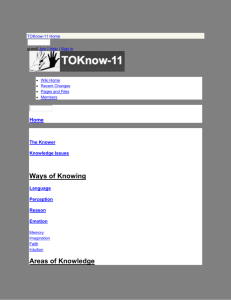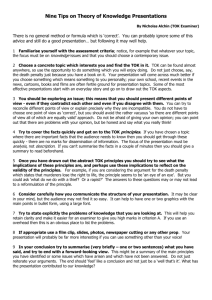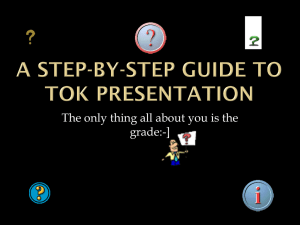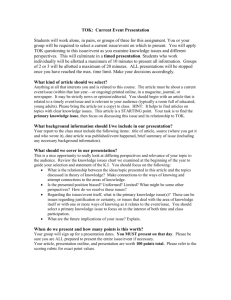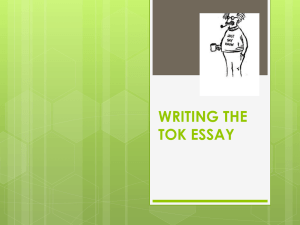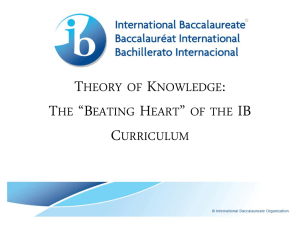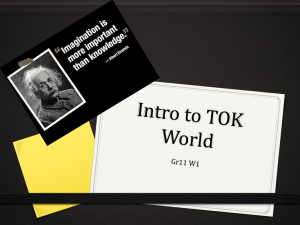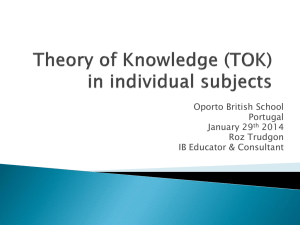TOK Presentation Outline
advertisement
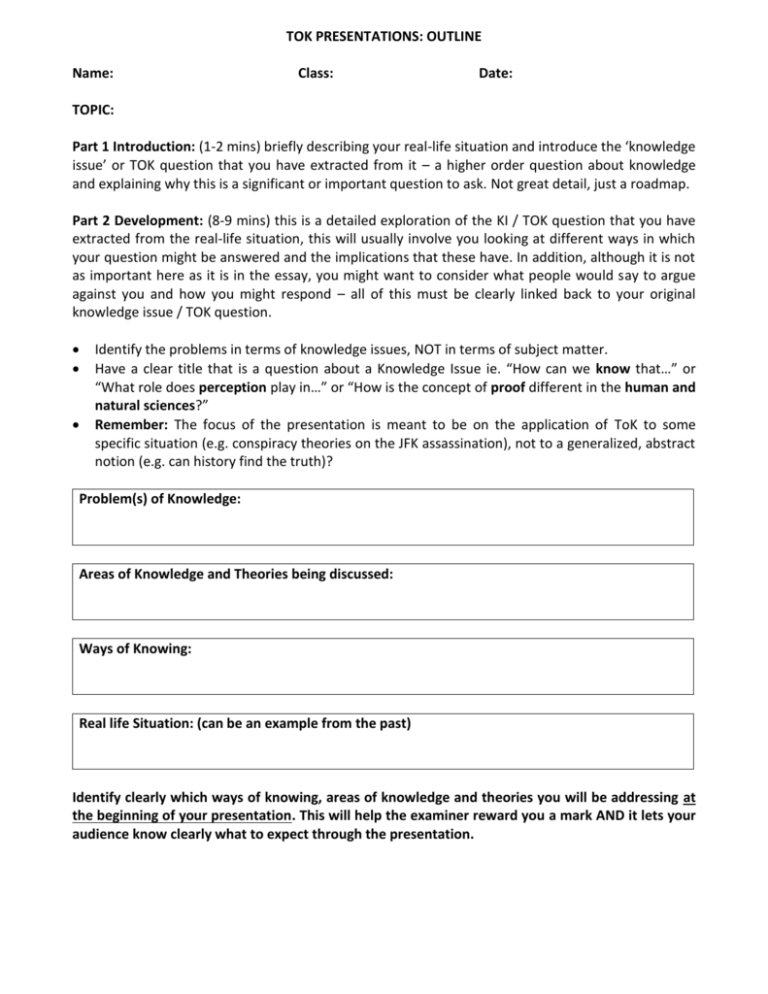
TOK PRESENTATIONS: OUTLINE Name: Class: Date: TOPIC: Part 1 Introduction: (1-2 mins) briefly describing your real-life situation and introduce the ‘knowledge issue’ or TOK question that you have extracted from it – a higher order question about knowledge and explaining why this is a significant or important question to ask. Not great detail, just a roadmap. Part 2 Development: (8-9 mins) this is a detailed exploration of the KI / TOK question that you have extracted from the real-life situation, this will usually involve you looking at different ways in which your question might be answered and the implications that these have. In addition, although it is not as important here as it is in the essay, you might want to consider what people would say to argue against you and how you might respond – all of this must be clearly linked back to your original knowledge issue / TOK question. Identify the problems in terms of knowledge issues, NOT in terms of subject matter. Have a clear title that is a question about a Knowledge Issue ie. “How can we know that…” or “What role does perception play in…” or “How is the concept of proof different in the human and natural sciences?” Remember: The focus of the presentation is meant to be on the application of ToK to some specific situation (e.g. conspiracy theories on the JFK assassination), not to a generalized, abstract notion (e.g. can history find the truth)? Problem(s) of Knowledge: Areas of Knowledge and Theories being discussed: Ways of Knowing: Real life Situation: (can be an example from the past) Identify clearly which ways of knowing, areas of knowledge and theories you will be addressing at the beginning of your presentation. This will help the examiner reward you a mark AND it lets your audience know clearly what to expect through the presentation. Within the following format the “TOK Points”, whatever they might be, should present and address: Clear, different perspectives (time, discipline, cultures, geography, politics) Analysis of the implications/effects of Knowledge Issues Analysis of the implications/effects of perspectives and/or counterclaims. Connections among WOK: Perception, Language, Emotion, Reason Connections among AOK: Ethics, History, Natural Science, Human Science, Art, Mathematics. Explore the Knowledge Issue/Perspective in detail, don’t just explain. Consider problems, issues, flaws, shortcomings, or implications that are raised when considering that particular issue or perspective. Are these legitimate concerns? Follow the format: Introduction TOK point 1 TOK point 2 TOK point 3 TOK point 4 TOK point 5 TOK point 6 TOK point 7 Conclusion Conclusion: Your Conclusion should offer a clear answer to the question. Touch on the significance of the issue being addressed. Review or discuss implications of the areas covered if not done so elsewhere. If both of the above have been addressed elsewhere, briefly remind the viewers.
